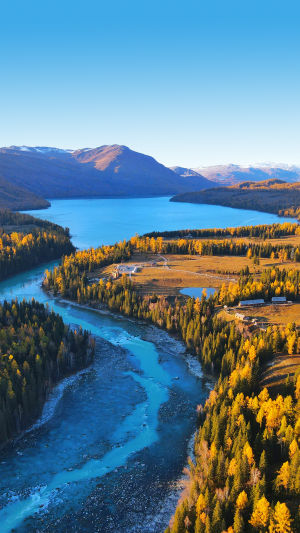Lakes are one of the most important natural resources in the world. They provide fresh water, which is vital for human consumption, agriculture, and industrial purposes.
In addition, lakes are home to countless organisms and play a crucial role in maintaining the ecological balance of the planet.
However, lakes are currently facing a range of challenges, including climate change and human activities, which are causing significant changes in their ecosystems.
According to satellite data, there are approximately 100 million lakes worldwide that cover more than one hectare. The Caspian Sea is currently the world's largest lake in terms of area, followed by Lake Superior and Lake Victoria.
However, lakes are changing due to rising global temperatures and human damage, which is causing some lakes to shrink, such as the Aral Sea and Lake Chad in the African Sahara. Additionally, there is an increase in the number of non-freezing conditions each winter, which could pose a great threat to human life and the environment.
To understand the impact of climate change and other factors on lakes, scientists at the Michigan Technology Research Institute (MTRI) studied several lakes worldwide, including the Laurentian Great Lakes on the U.S.-Canada border, the three Great Lakes of Africa (Lake Tanganyika, Lake Victoria, and Lake Malawi), and Great Bear Lake in Canada.
These 11 lakes hold more than 50% of the Earth's surface freshwater and are home to millions of people and countless other organisms. Therefore, it is crucial to understand the mechanisms by which they are affected by climate change and other factors.
The MTRI study found that two lakes in Canada and Lake Tanganyika in Africa have witnessed the greatest change in primary producers - the growth of algae in the water column. Fluctuations in algal productivity indicate significant changes in lake ecosystems.
Multiple stresses such as climate change and eutrophication are important drivers of aquatic plant decline in lakes. Aquatic plant decline can lead to a shift from a clear water state to a turbid water state in lakes, which in turn reduces ecosystem functions and services.
Benthic fish can increase water turbidity through disturbance and trophic cascade effects, promote the growth of algae (phytoplankton and attached algae), or inhibit aquatic plant growth through direct grazing effects. Benthic fish abundance usually increases with increasing eutrophication.
The study found that climate warming advanced the life cycle of minnows by 17 days. Cyprinus carpio inhibited the growth of minnows but promoted the growth of rhododendrons, which increased turbidity and promoted the growth of phytoplankton and attached algae, leading to the transformation of the ecosystem into a phytoplankton-dominated homeostatic system.
Warming exacerbates the effects of carp on submerged plants and inhibits the growth of phytoplankton, leading to further increases in water turbidity.
Warming may lead to a shift from a clear water state dominated by aquatic plants to a turbid water state in shallow lake ecosystems, not due to direct effects of warming on aquatic plants, but indirectly through benthic fish.
As climate change intensifies, future lake management should control benthic fish populations through biological regulation (reduction of benthic fish and increase of carnivorous fish), in addition to continuing to reduce nutrient inputs.
To obtain a more complete picture of the entire ecosystem, it is essential to observe the productivity of freshwater lakes, algal populations, water clarity, water temperature, solar radiation, and wind speed.
Water is the source of life, and lakes are bodies of water on which many people depend for their survival. Therefore, a better understanding of changes in lake productivity is crucial for the communities that inhabit their shores.





